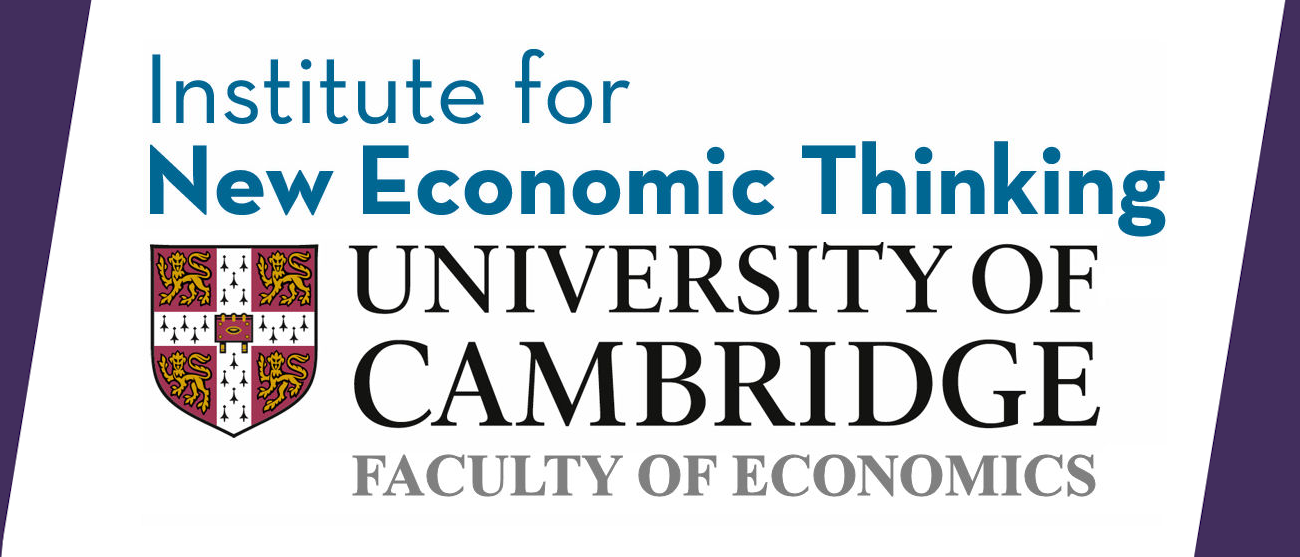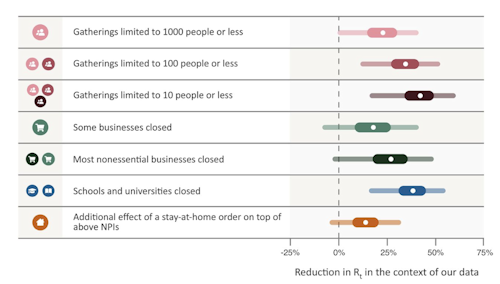Worldwide, governments have mobilized resources to fight the COVID-19 pandemic. A wide range of nonpharmaceutical interventions (NPIs) has been deployed, including stay-at-home orders and the closure of all nonessential businesses. However, the effectiveness of different NPIs at reducing transmission is poorly understood.
We gathered chronological data on the implementation of NPIs for 34 European and seven non-European countries during the first wave of the epidemic. Exploiting the staggered implementation of NPIs, we estimate the effectiveness of policies ranging from limiting gathering sizes, business closures, and closure of educational institutions to stay-at-home orders. To do so, we use a Bayesian hierarchical model that links NPI implementation dates to national case and death counts and supported the results with extensive empirical validation.
NPI effectiveness under default model settings
Limiting gatherings to 10 people or less was more effective than limits of up to 100 or 1000 people and had a more robust effect estimate. Moreover, we found that issuing a stay-at-home order had a small effect when a country had already closed educational institutions, closed nonessential businesses, and banned gatherings.
Finally, we found a large effect for closing schools and universities in conjunction, which was remarkably robust across different model structures, variations in the data, and epidemiological assumptions.
Business closures and gathering bans both seem to have been effective at reducing COVID-19 transmission. Closing most nonessential face-to-face businesses was only somewhat more effective than targeted closures, which only affected businesses with high infection risk, such as bars, restaurants, and nightclubs.
Read the full paper: Inferring the effectiveness of government interventions against COVID-19.
About the authors
This was joint work by Brauner, Jan M. and Mindermann, Sören and Sharma, Mrinank and Johnston, David and Salvatier, John and Gavenčiak, Tomáš and Stephenson, Anna B. and Leech, Gavin and Altman, George and Mikulik, Vladimir and Norman, Alexander John and Monrad, Joshua Teperowski and Besiroglu, Tamay and Ge, Hong and Hartwick, Meghan A. and Teh, Yee Whye and Chindelevitch, Leonid and Gal, Yarin and Kulveit, Jan

Tamay Besiroglu is an MPhil student at the Faculty of Economics, University of Cambridge. He won the Stevenson Prize for top performance in the MPhil in Economics and his research interests are in the Economics of Innovation and Science, and Building Forecasting Tools









